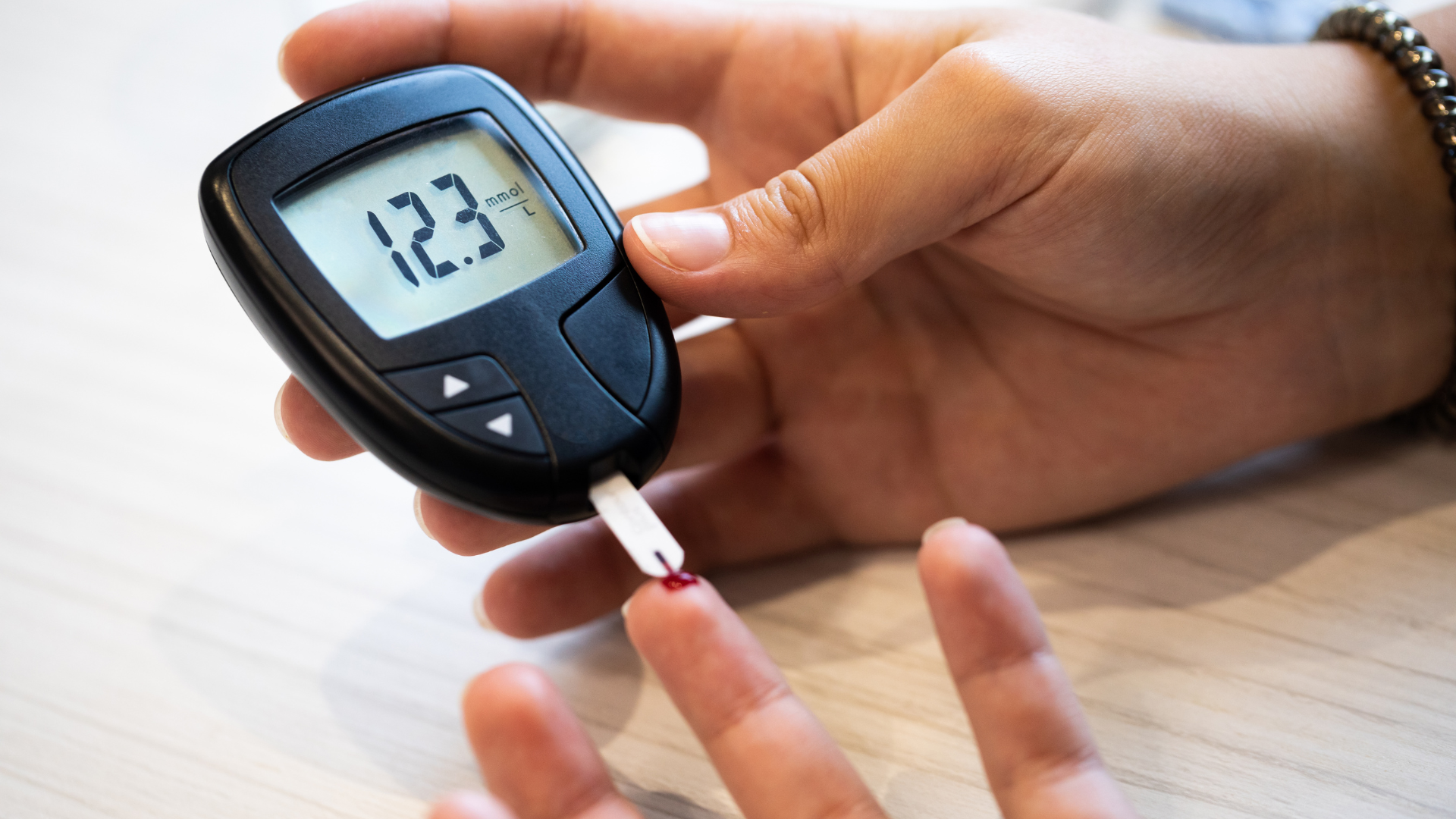Balancing blood sugar naturally supports hormonal health, mood stability, energy, and metabolic resilience in midlife women. Here are evidence‑based strategies for hormonal harmony through nutrition, lifestyle, and targeted supplements.
Introduction
How to balance blood sugar naturally for hormonal health is a vital question for women entering midlife (35+). As estrogen, progesterone, and insulin interact more closely, even modest blood sugar fluctuations can ripple into mood swings, sleep problems, and weight shifts. If your hormones feel off, getting your glucose in check can become one of your most powerful tools for regaining balance and vitality.
In this article you’ll discover science‑backed strategies to support stable blood sugar, targeted nutrients that help, and how hormonal changes in perimenopause and menopause change your glucose-insulin sensitivity. The goal is to empower you to feel more in control of your energy, mood, and hormones.
Why blood sugar matters for hormone balance
The interplay of insulin and sex hormones is critical. Insulin is more than just a metabolic hormone — it interacts directly with sex hormones. High insulin levels can suppress sex hormone binding globulin (SHBG), raising free androgen or estrogen exposure in tissues. Women with insulin resistance often show signs of hormonal imbalance like acne, irregular cycles, or weight gain.
Conversely, estrogen helps enhance insulin sensitivity and glucose uptake. In both animal and human studies, estradiol (E2) improved insulin sensitivity and lowered fasting glucose.
As women transition through perimenopause and menopause, estrogen levels fall. That decline is accompanied by increased risk of insulin resistance, central fat accumulation, and metabolic disruption.
Because of this dynamic interplay, stabilizing blood sugar can reduce hormonal noise — helping mood, energy, and symptoms like hot flashes or fatigue feel more manageable.
Key foundations: diet, movement, sleep, stress
Start with what’s most accessible — your daily habits. Even small changes in meals, sleep, and stress management can shift glucose patterns in powerful ways.
Eat low glycemic, fiber‑rich whole foods
Not all carbs are equal. To balance blood sugar naturally for hormonal health, emphasize:
- Nonstarchy vegetables, legumes, whole grains (like oats, quinoa, barley)
- Fruit in whole form (especially berries, apples, pears)
- Healthy fats and protein at each meal (nuts, seeds, avocado, fish, lean meats)
High fiber slows digestion, blunts glucose spikes, and supports beneficial gut bacteria — which in turn influence metabolic and hormonal signaling.
Prioritize protein and healthy fats
Meals higher in protein and unsaturated fat help slow carbohydrate absorption and reduce insulin surges. In women with PCOS, high-protein diets have shown improved insulin resistance and hormonal balance. Include at least 20–30 grams of protein at breakfast, lunch, and dinner to buffer glucose swings.
Move your body — especially strength and interval work
Exercise is among the most potent tools to enhance insulin sensitivity independently of weight loss. Resistance training builds muscle, increasing your body’s ability to pull glucose from the blood. High intensity interval training (HIIT) in short bursts improves insulin signaling. Even walking after meals helps glucose clearance. Women with PCOS showed better insulin metrics with increased physical activity, regardless of major diet changes.
Support sleep quality and circadian rhythm
Poor or shortened sleep impairs insulin sensitivity, raises cortisol, and disrupts appetite regulation. One night of restricted sleep can reduce glucose tolerance. Aim for 7–9 hours of quality sleep nightly. Prioritize consistent sleep times, remove screens before bed, and reduce stimulants in the evening.
Manage stress and cortisol
Chronic stress elevates cortisol, which raises blood sugar, promotes abdominal fat, and can worsen insulin resistance. Mindfulness, deep breathing, yoga, or meditation practices can help moderate cortisol and buffer metabolic stress.
Nutrients, botanicals and supplements that support glucose and hormonal balance
Always consult your healthcare provider before starting any supplement
Magnesium
Magnesium is critical for insulin receptor signaling and glucose uptake. Many midlife women are magnesium deficient, which may contribute to insulin resistance. In trials, magnesium supplementation improved fasting insulin, HOMA‑IR, and metabolic markers.
Myo-inositol and D-chiro-inositol
These forms of inositol influence insulin signaling pathways. In women with metabolic and hormonal imbalance, especially PCOS, supplementation improved insulin sensitivity, reduced androgen levels, and enhanced menstrual regularity.
Berberine
Berberine is a botanical that mimics metformin’s effects — lowering fasting glucose, improving insulin sensitivity, and reducing lipid markers. Some human trials show reductions in HbA1c and fasting insulin with consistent use.
Alpha-lipoic acid (ALA)
ALA is an antioxidant that supports mitochondrial function and insulin sensitivity. Studies suggest it can reduce insulin resistance markers in populations with metabolic imbalance.
Chromium and zinc
These trace minerals are involved in insulin signaling. Some evidence supports modest improvements in insulin resistance when chromium picolinate or zinc are added alongside dietary changes.
Vitamin D
Vitamin D deficiency is common and associated with insulin resistance. Supplementation in deficient women has been shown to modestly improve insulin sensitivity and glycemic markers.
How to implement these strategies step by step
Phase 1: Foundation (Weeks 1–4)
Track your meals and symptoms to see patterns. Swap refined carbs like white bread or sugary snacks for whole foods. Add 20 grams of protein to key meals. Walk for 10–15 minutes after meals. Improve your sleep habits. Begin magnesium supplementation if safe for you.
Phase 2: Movement and fine tuning (Weeks 5–12)
Add two to three resistance training sessions per week. Introduce HIIT or interval walks. Reduce your stress load with breathwork or journaling. If blood sugar is still unstable, consider introducing inositol, ALA, or berberine with provider guidance. Reassess after 12 weeks using labs or glucose tracking tools.
Phase 3: Maintenance and hormone integration
Keep your eating, movement, sleep, and stress habits consistent. Adjust supplement doses with your provider’s input. Monitor hormone symptoms and track patterns during your cycle or through menopause. Strengthen internal links across your personal wellness routines — from nutrient-dense meals to muscle-building to blood sugar-friendly self-care.
Frequently Asked Question
What is normal blood sugar and insulin in midlife women?
Fasting blood glucose under 100 mg/dL (5.6 mmol/L) is generally considered normal. Insulin levels vary by lab. The HOMA‑IR (calculated from fasting glucose and insulin) below 2.5 is often used to suggest good insulin sensitivity. Work with your provider to interpret results in context of your age and health status.
Can low-carb or keto diets help manage hormone imbalance?
Very low-carb diets may reduce glucose and insulin surges, but can also impact thyroid and cortisol levels, and may not be sustainable. For most midlife women, a moderate-carb, nutrient-dense plan is more balanced and adaptable. Focus on whole foods, fiber, and protein over drastic carb restriction.
Is intermittent fasting helpful for hormonal health?
Some women benefit from time-restricted eating (such as a 12:12 or 14:10 window) to support insulin sensitivity. However, too much fasting can stress the body or worsen fatigue. Start gently and track how you feel. Avoid skipping meals if you are under-eating or dealing with adrenal issues.
A Word from Vitamins For Woman
Balancing blood sugar isn’t just about weight or calories. For women in midlife, it’s about protecting your energy, mood, hormones, and long-term health. These shifts don’t have to be extreme — small daily habits can lead to big changes over time. At Vitamins For Woman, we’re here to support you with research-backed guidance and practical encouragement every step of the way.
You don’t need to overhaul everything at once. Start where you are. Support your body with nourishing meals, sleep, movement, and stress care. Your hormones will thank you.
References
- Barros, R. P., & Gustafsson, J. A. (2011). Estrogen receptors and the metabolic network. Cell metabolism, 14(3), 289–299. https://doi.org/10.1016/j.cmet.2011.08.005
- Kautzky-Willer, A., Harreiter, J., & Pacini, G. (2016). Sex and Gender Differences in Risk, Pathophysiology and Complications of Type 2 Diabetes Mellitus. Endocrine reviews, 37(3), 278–316. https://doi.org/10.1210/er.2015-1137
- Moini, J., & Wiwanitkit, V. (2021). Role of magnesium in women with PCOS. Gynecological Endocrinology, 37(5), 404–408. https://doi.org/10.1080/09513590.2021.1893514
- Genazzani, A. D., et al. (2008). Effects of myo-inositol in women with PCOS: A randomized controlled trial. Gynecological Endocrinology, 24(3), 139–144. https://doi.org/10.1080/09513590801990831
- Yin, J., et al. (2008). Efficacy of berberine in patients with type 2 diabetes mellitus. Metabolism, 57(5), 712–717. https://doi.org/10.1016/j.metabol.2008.01.013







